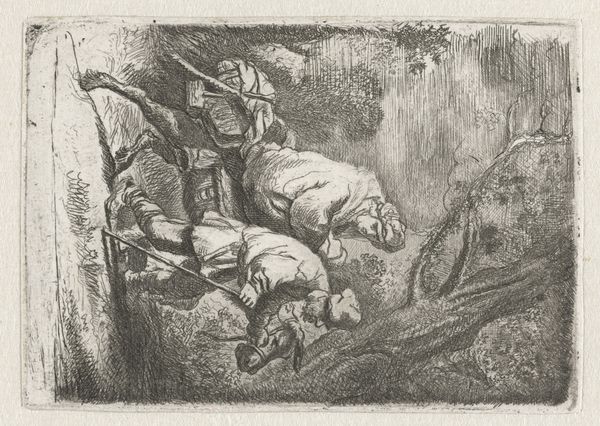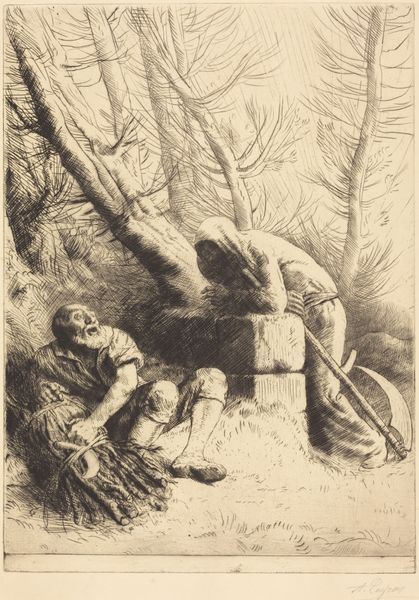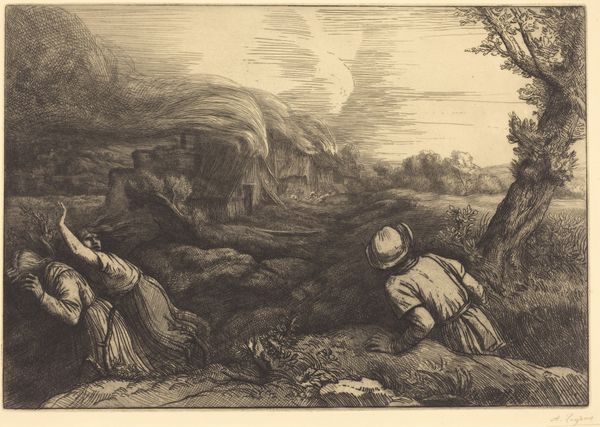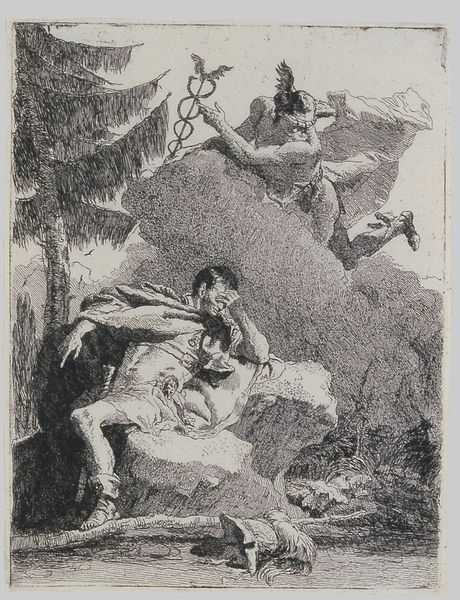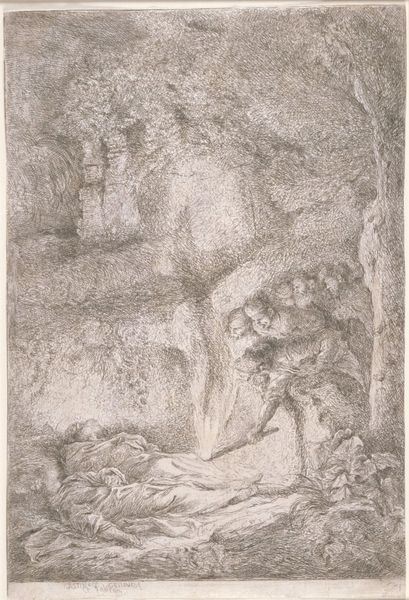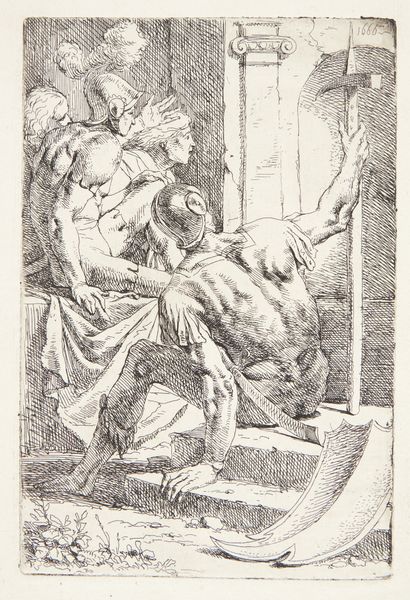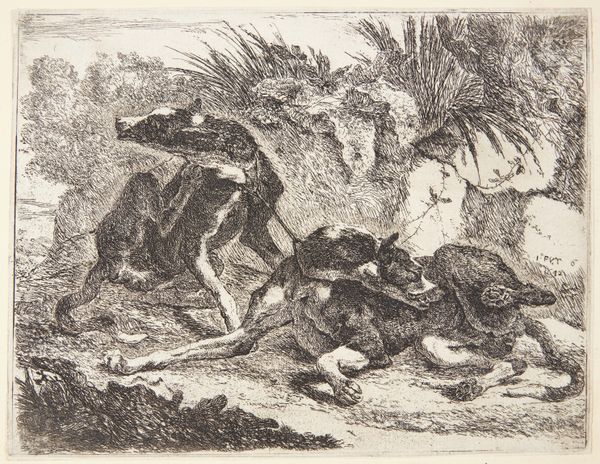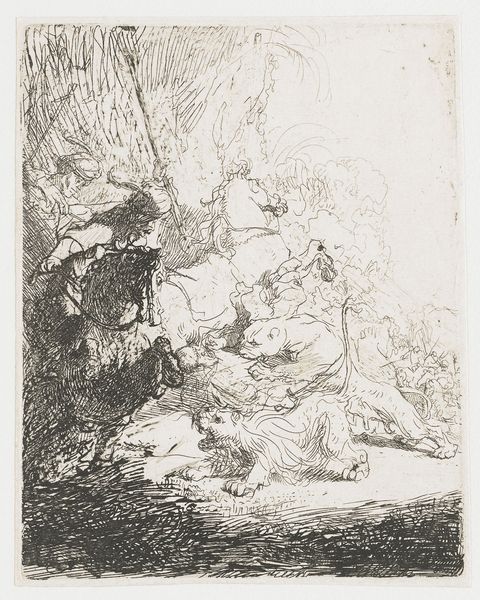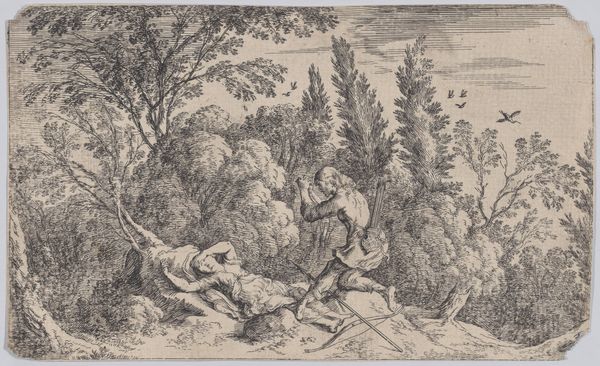
Finding the bodies of Saints Peter and Paul (fragment) 1642 - 1652
0:00
0:00
drawing, print
#
drawing
#
narrative-art
#
baroque
# print
#
figuration
#
history-painting
Dimensions: sheet: 7 1/4 x 7 7/16 in. (18.4 x 18.9 cm)
Copyright: Public Domain
Editor: Here we have "Finding the bodies of Saints Peter and Paul (fragment)" created between 1642 and 1652 by Giovanni Benedetto Castiglione. It appears to be a print, maybe an etching. The somber mood is really enhanced by the stark contrast and almost claustrophobic composition. What historical contexts might shed light on this scene? Curator: It’s interesting to consider how Castiglione, working in the Baroque era, utilizes this print medium to disseminate imagery with both religious and political undertones. The "finding" of saints’ bodies—relics—held immense power in solidifying the authority of the Church. Editor: So, beyond the religious aspect, the act of locating and venerating these bodies serves a broader socio-political function? Curator: Precisely. Think about the audience for these prints. They are not just devotional objects. Prints like this circulate ideas, reinforce beliefs, and contribute to a shared visual culture that supported the existing power structure. Who is given the task of recovering these bodies, and how are they depicted? Editor: The figures discovering the bodies seem very humble, almost fearful, holding a torch to illuminate the scene. They’re not portrayed as powerful figures, but as witnesses. Curator: And what does that suggest about the intended reception of the print? The viewer is invited to participate in this act of witnessing, reaffirming their own faith and allegiance. But also consider the act of "finding" – what does it imply about what was lost, and the act of making the private, public? Editor: So the print creates a public display from a very private, sacred, moment. Curator: Exactly. That tension between private devotion and public display is key to understanding the cultural work this image performs. It’s not just art; it’s a statement about power, faith, and visibility. Editor: That definitely changes my initial understanding. It’s amazing how something that appears strictly religious can have such powerful political implications. Curator: And that's the beauty of looking at art through the lens of its historical moment – the quiet stories it has to tell about how people used imagery to build, maintain and negotiate cultural values.
Comments
No comments
Be the first to comment and join the conversation on the ultimate creative platform.

